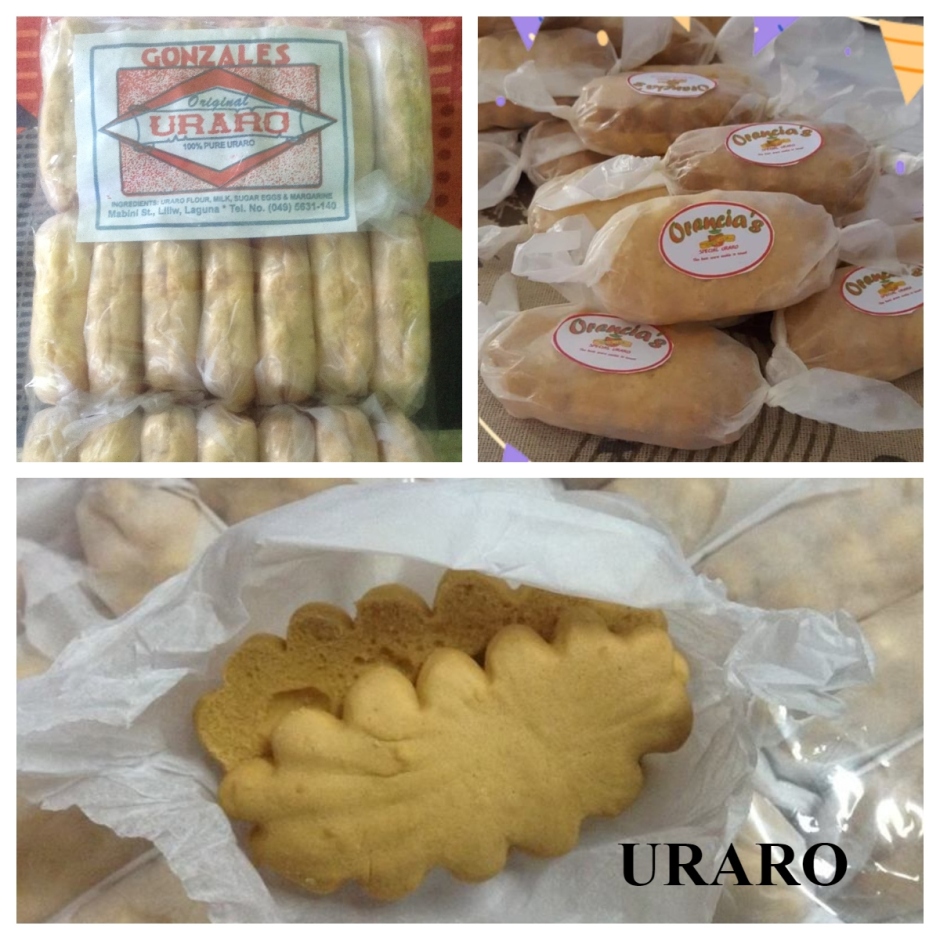Today, Tita S will share with you one of her favored Filipino cookies. Foreigner readers, it is called uraro, araro, or arrowroot cookie.
Allow Titas S to tell you 7 facts about uraro:
1.Uraro is the Filipino version of a cookie made from arrowroot1 flour.
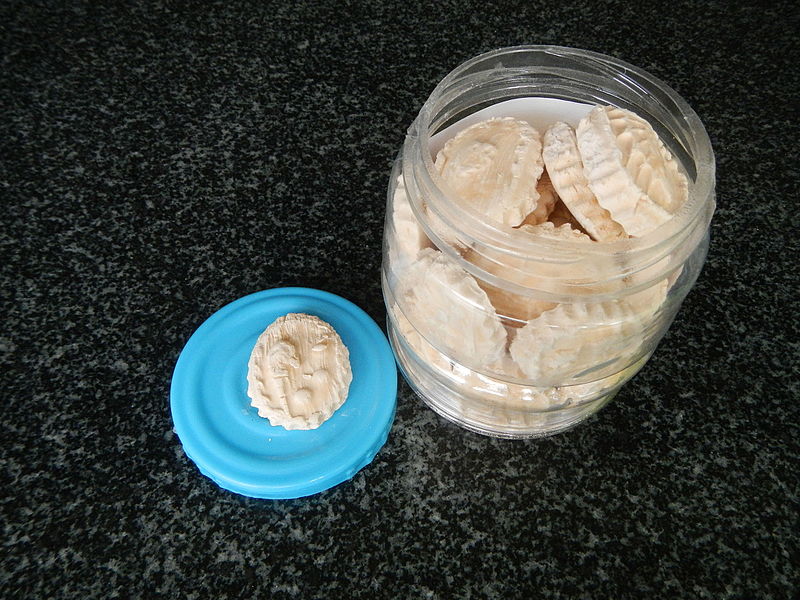
Uraro from Samal, Bataan – Photo source: Judgefloro, own work, Public Domain, created 28 September 2015
2. The name uraro is the Tagalog2 and Spanish common name of the Maranta arrowroot, Maranta arundinacea3, the source of the flour.
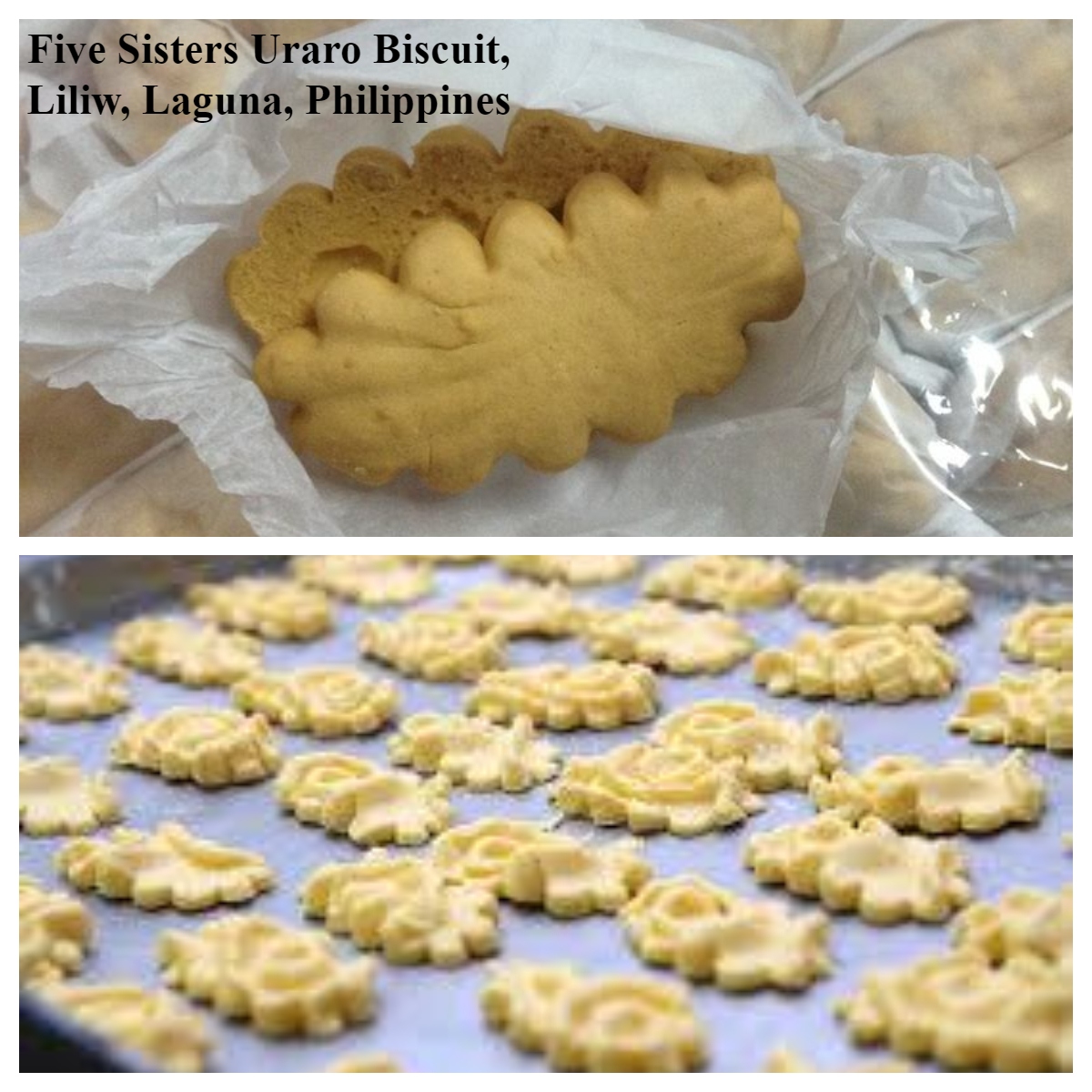
Five Sisters Uraro Biscuit, Liliw, Laguna – Photo source: https://www.facebook.com/Five-Sisters-Uraro-Biscuit-525930727531046/photos/a.525931114197674/525931124197673 and https://www.facebook.com/Five-Sisters-Uraro-Biscuit-525930727531046/photos/525948144195971
3. It is also called galletas de Liliw (Spanish for “Liliw buscuits”), after the town of Liliw in the province4 of Laguna5, Philippines, where it is a specialty. And you know what, this is my favorite! More of that below.
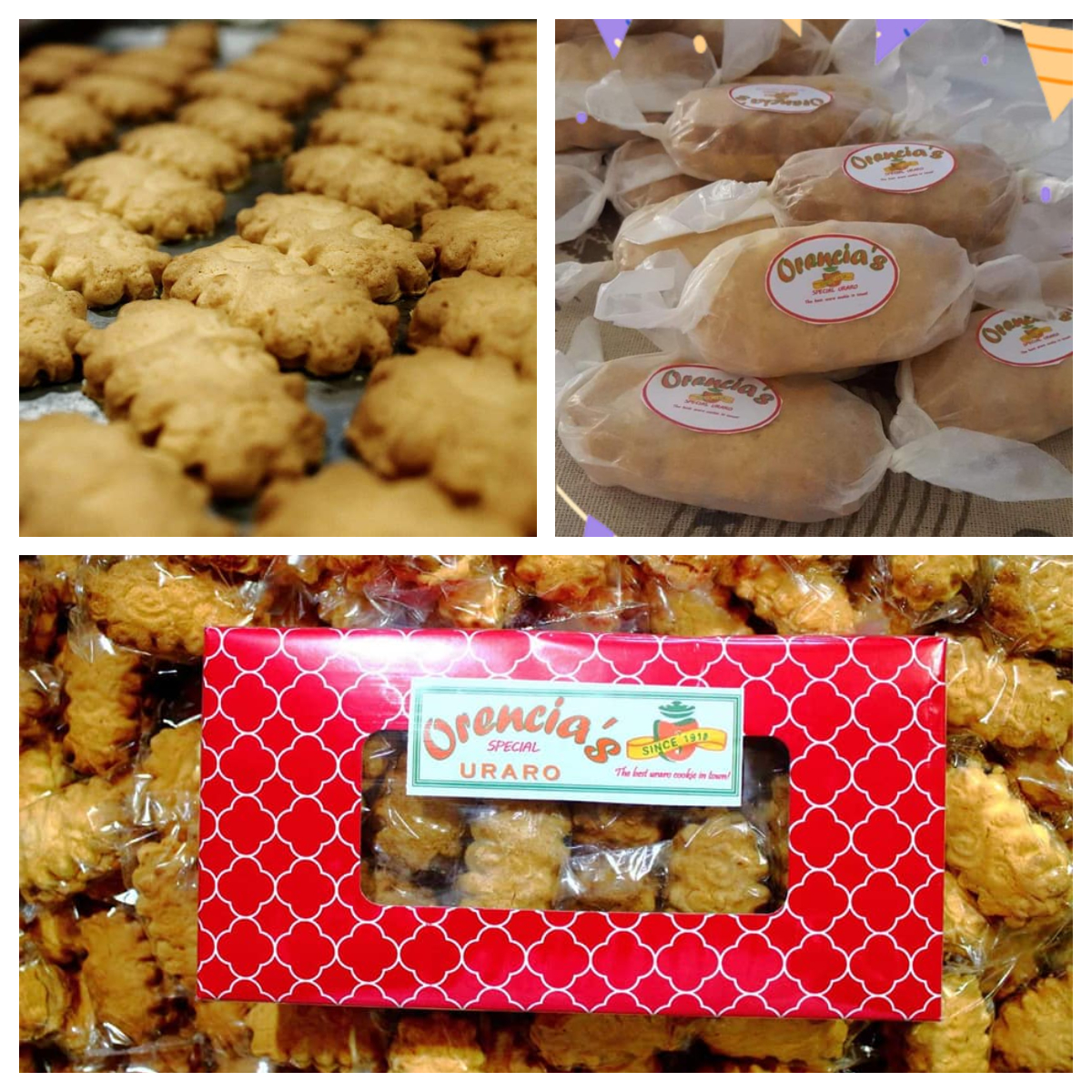
Orencia’s Uraro, Liliw. Laguna – Source of photos: https://www.facebook.com/orenciauraro/photos
4. Uraro originated from the Tagalog2 people of southern Luzon6, more specifically from the provinces4 of Laguna5, Quezon and Marinduque.
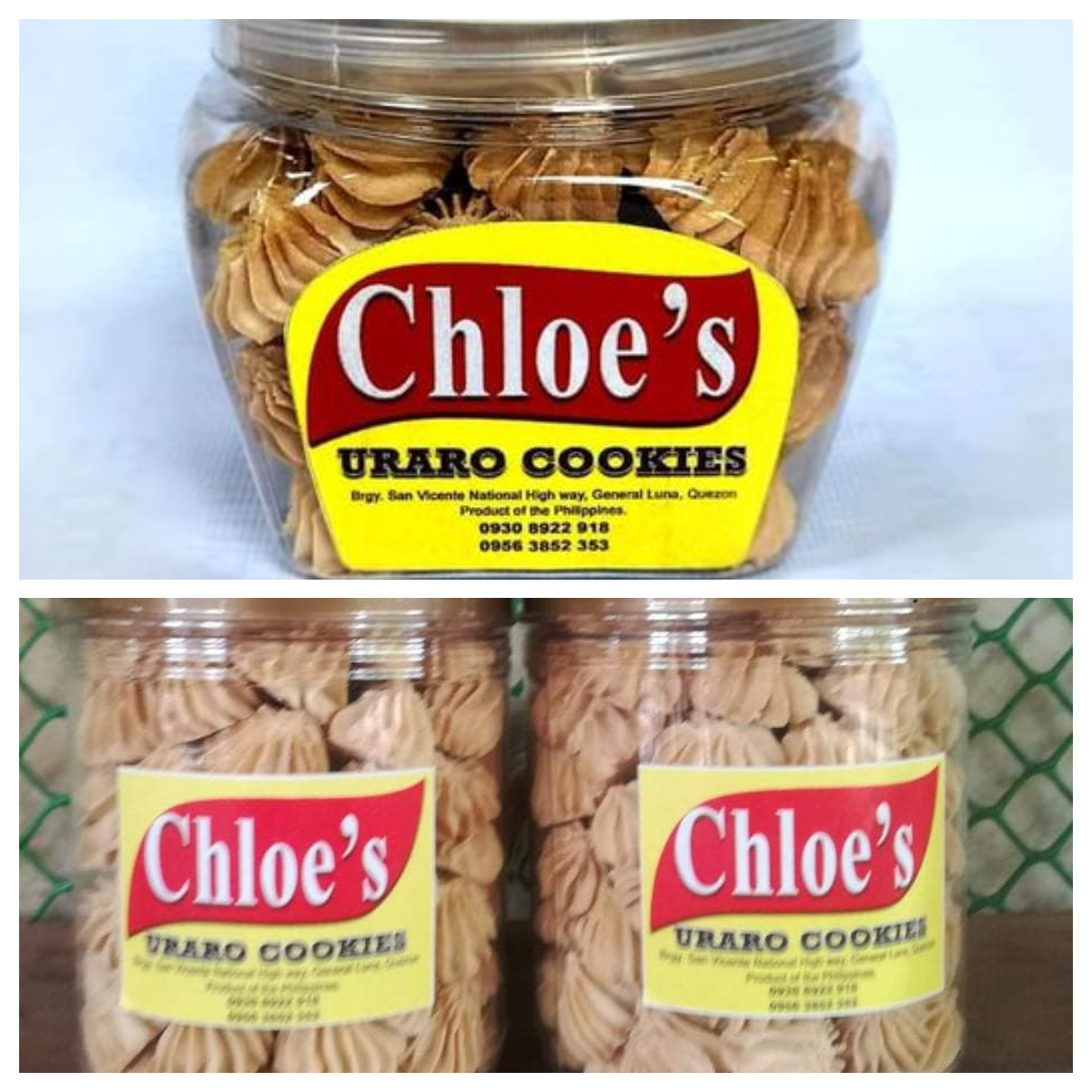
Chloe’s, made in Quezon province – Sources of photos: https://www.facebook.com/Chloes-Uraro-Cookies-625238838122002/photos/?ref=page_internal and https://www.facebook.com/255366894830030/posts/chloes-uraro-cookiesa-proudly-product-from-brgy-san-vicente-general-luna-quezon-/896342630732450/
5. The production of uraro is labor-intensive. The roots are washed, followed by a step called pag-ilod. The latter involves crushing the roots with a stone on a slab of hardwood in order to collect the resulting liquid.
Pinapatining follows. This process allows the liquid to sit until the water separates from the starch. The water is then poured off and the starchy mass is kneaded to extract more water. The starch is finally allowed to dry and sieved through a muslin cloth (katsa) to produce the flour. The complete process takes an entire day.
The flour is then mixed with rendered lard, duck egg yolks, sugar and milk. The mixture is then baked in the traditional Filipino clay oven called pugon.
Modern uraro is usually made from arrowroot1 flour, sugar, milk, margarine (or butter) and eggs. Sometimes, tapioca flour or rice flour is used, but this results in poorer quality cookies. Coconut cream or maple syrup may be used but this does not meet the traditional quality of uraro, which uses pure arrowroot flour and lard.
6. Uraro is made using traditional molds and is usually flower-shaped. It is commonly sold in cylindrical stacks wrapped in colored crepe paper (papel de Japon).
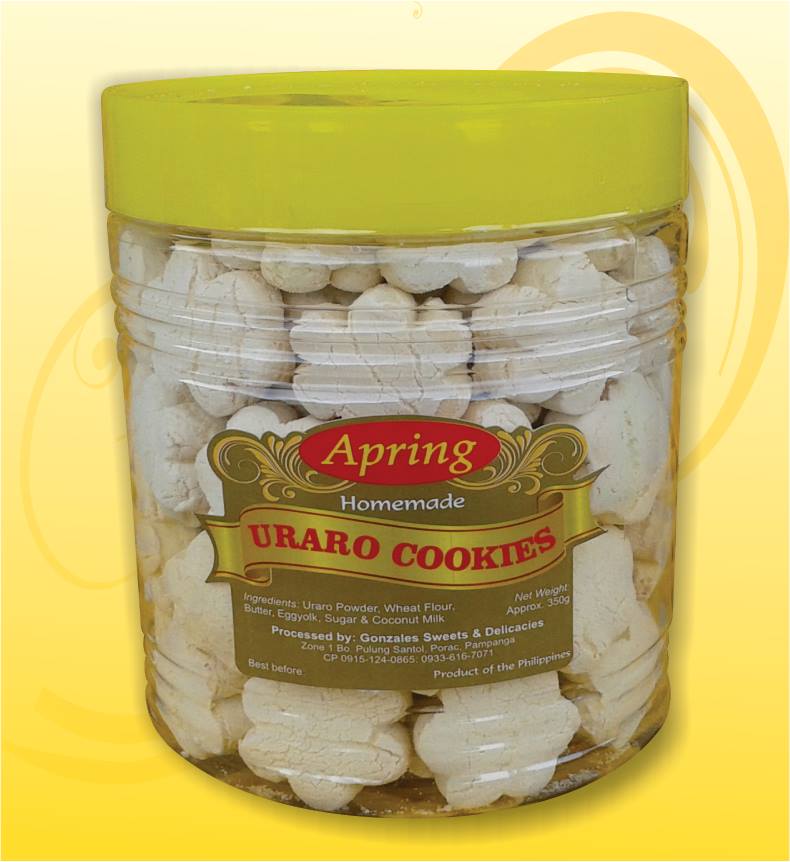
Apring Homemade Uraro Cookies, Porac, Pampanga – Photo source: https://www.facebook.com/apringuraro/photos/652904208246673
7. The resulting flower-shaped cookie has a light brown color. It has a dry and delicate powdery texture, but not as dry as another Filipino cookie called puto seco7.
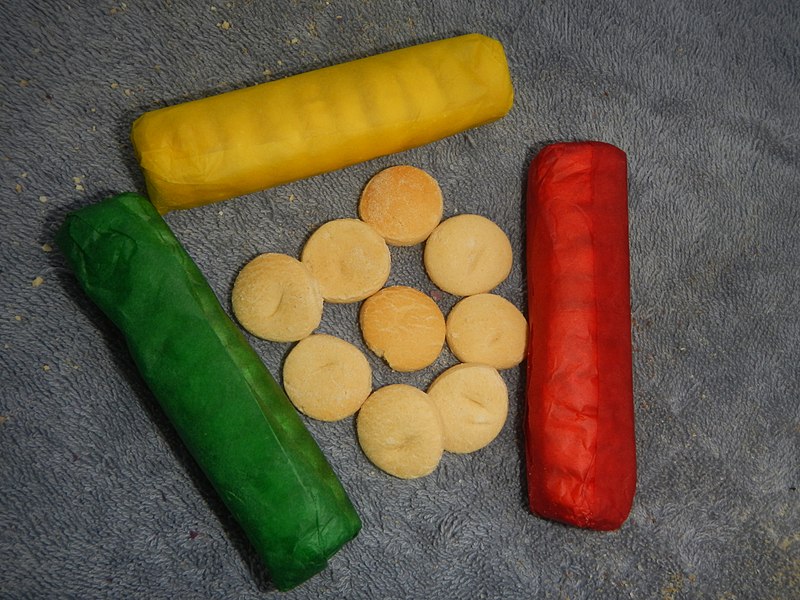
Uraro of Liliw, Laguna, in traditional colored papel de Japon wrappers – Photo source: Judgefloro, own work, CCO, created 11 July 2017, https://en.wikipedia.org/wiki/Uraro#/media/File:05545jfFoods_Cuisine_Desserts_of_the_Philippinesfvf_11.jpg
The information was obtained from the Wikipedia page “Uraro”.8
And now, for my personal comments:
I would like to share with you “Gonzales Original Uraro” which I buy directly from the house of the owner located along Mabini Street, in the town of Liliw, Laguna, Philippines. However, it is also sold in pasalubong9 stores in that town.
Here is the sample label of “Gonzales Original Uraro” which states that it is made from 100% pure uraro flour, along with milk, sugar, eggs and margarine.
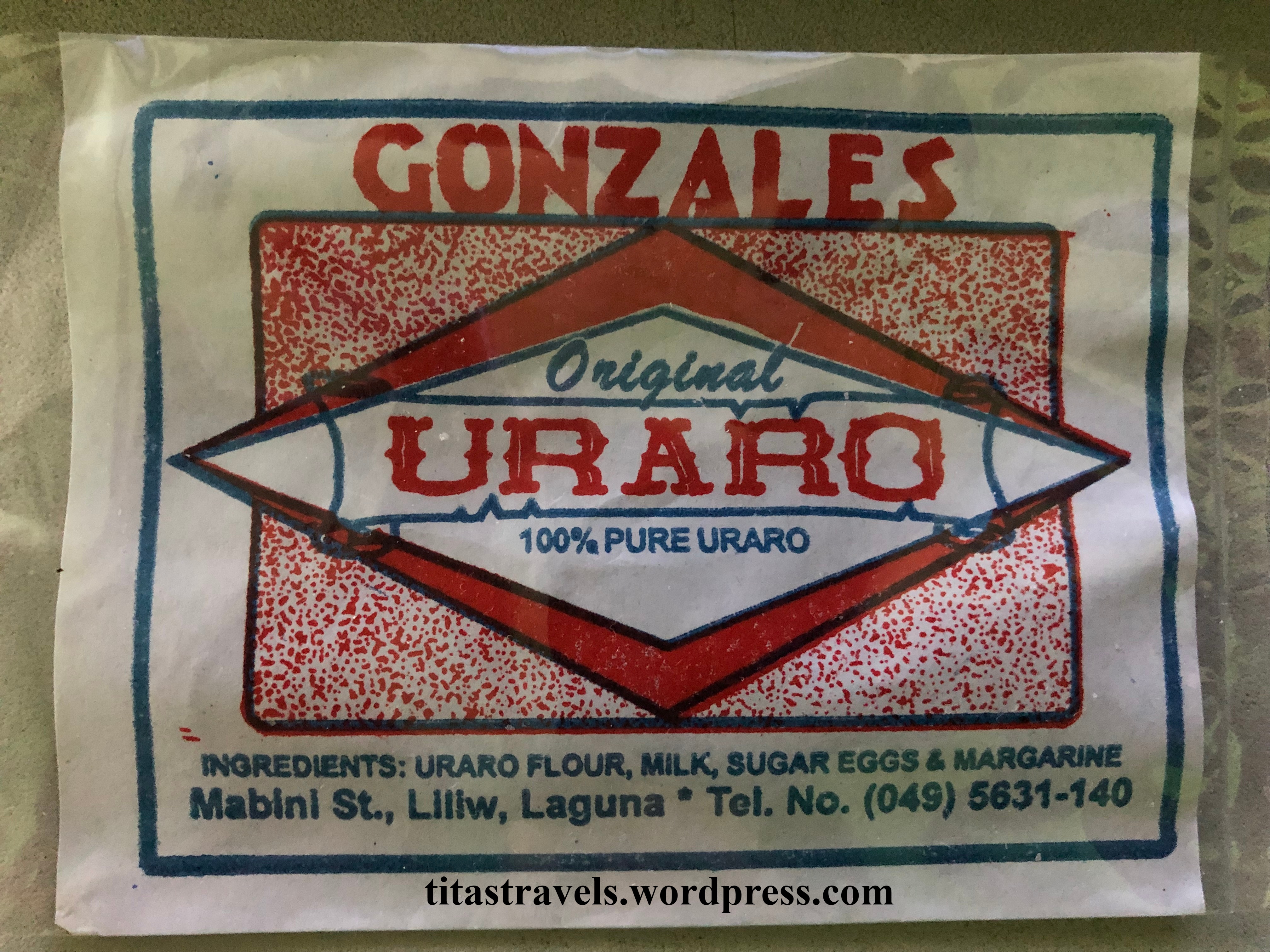
Individually wrapped uraro is sold in plastic packs of 21 pieces, sold at PHP115.

Each wrapped cookie consists of a pair of flower-designed uraro facing each other so that the carved flower side is on the outside.
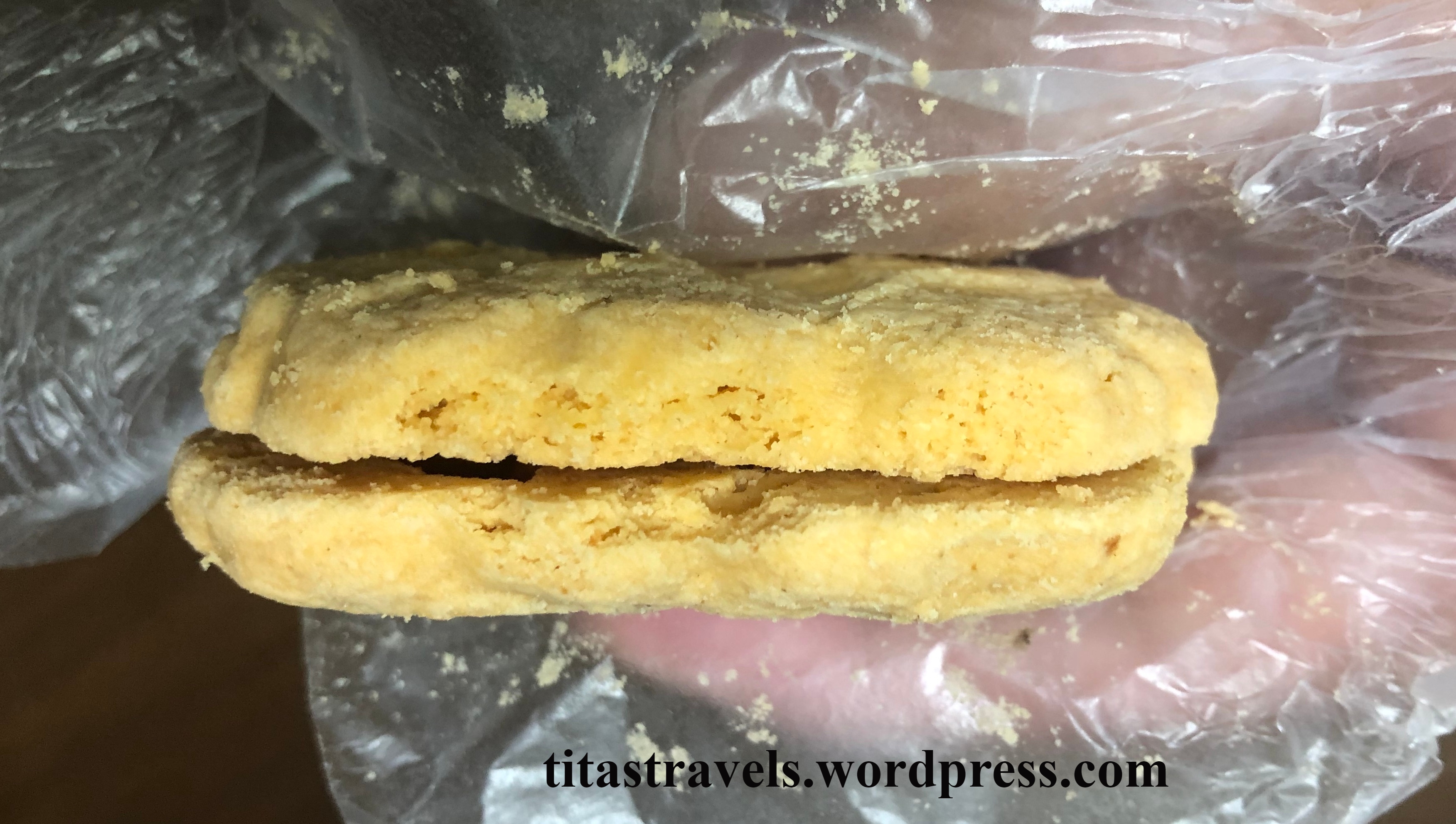
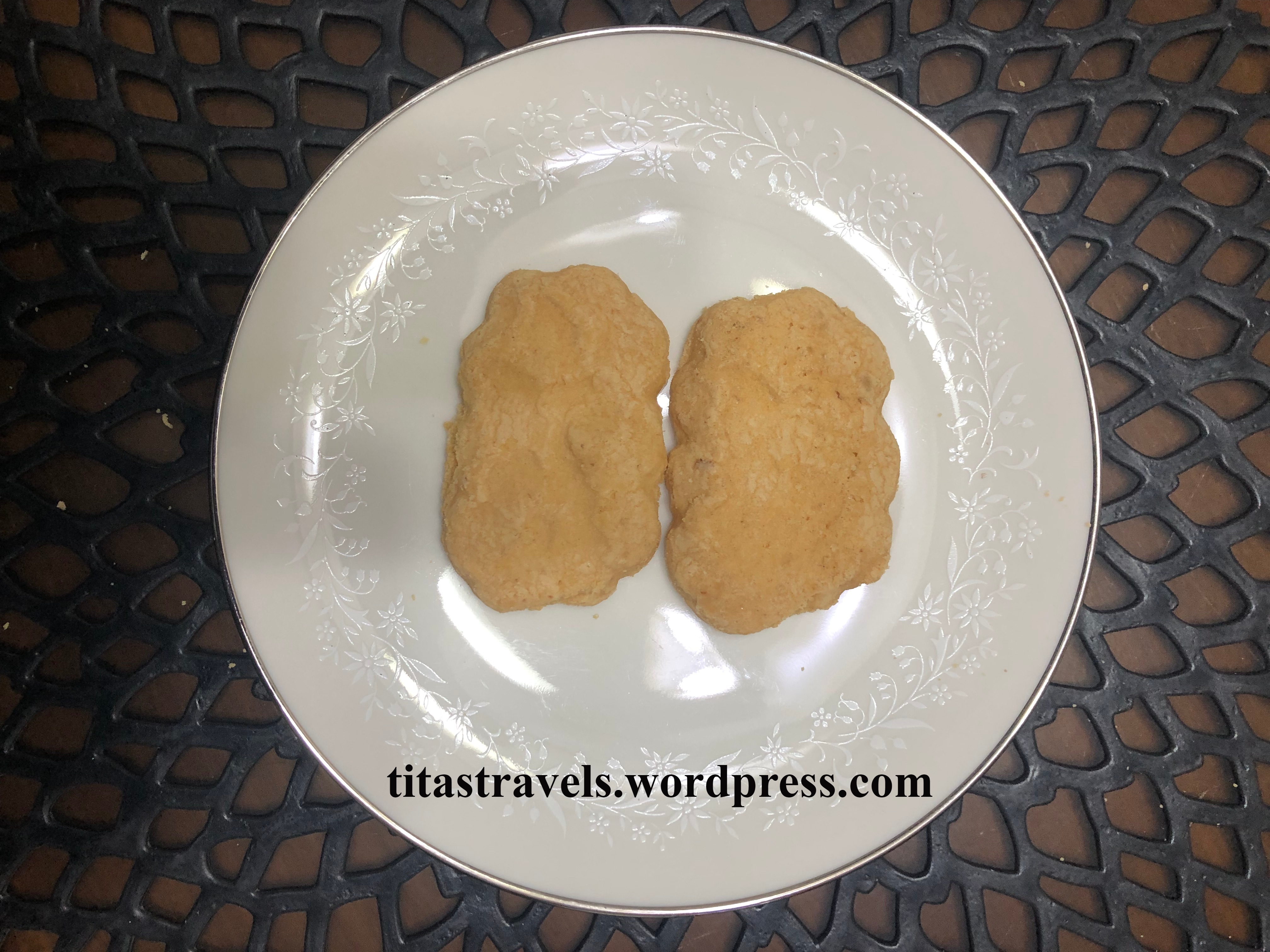
Outer appearance of molded uraro halves
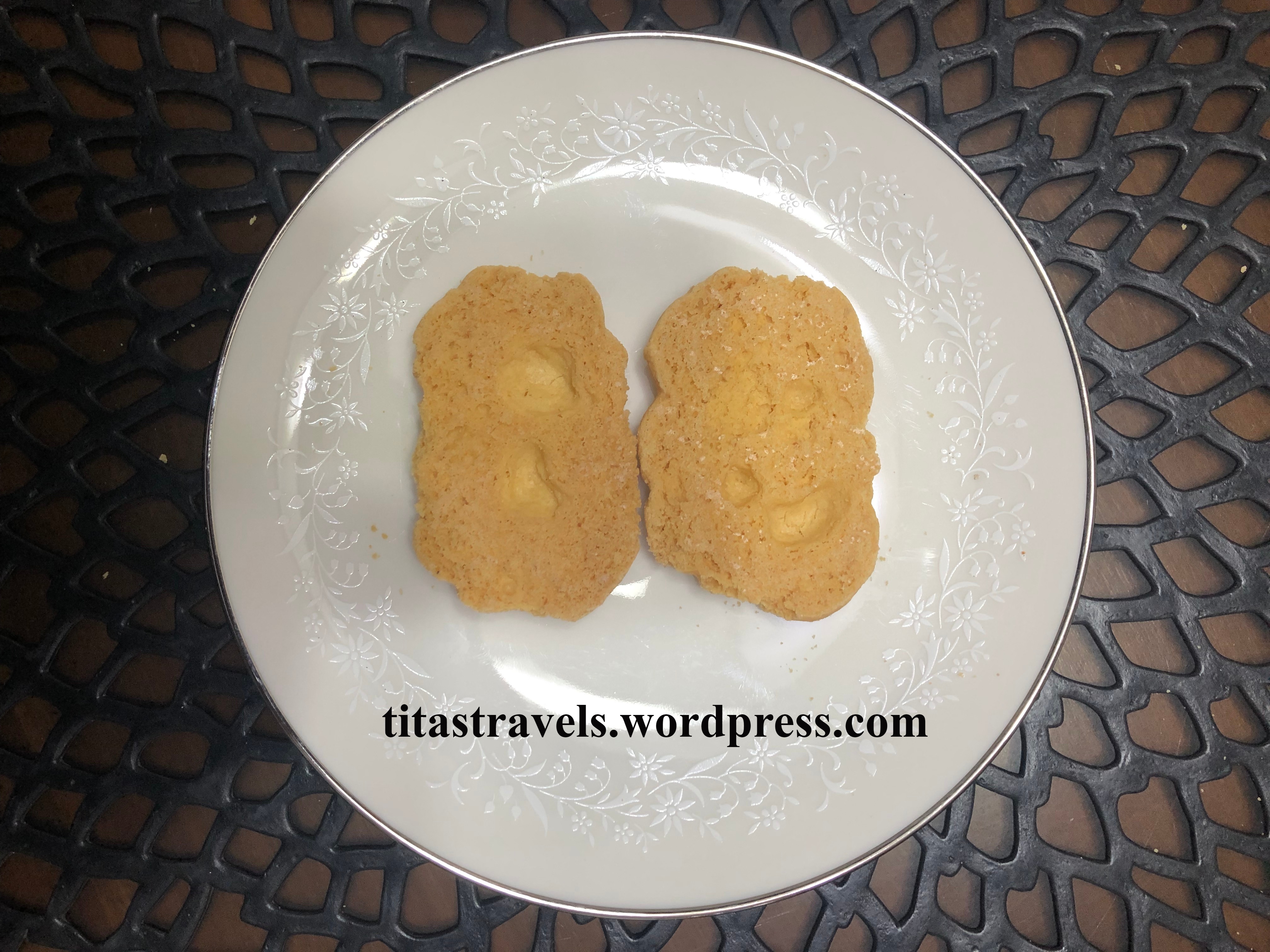
Inner appearance of uraro halves
A white, almost transparent paper, with twisted ends, is used to wrap each pair of uraro.
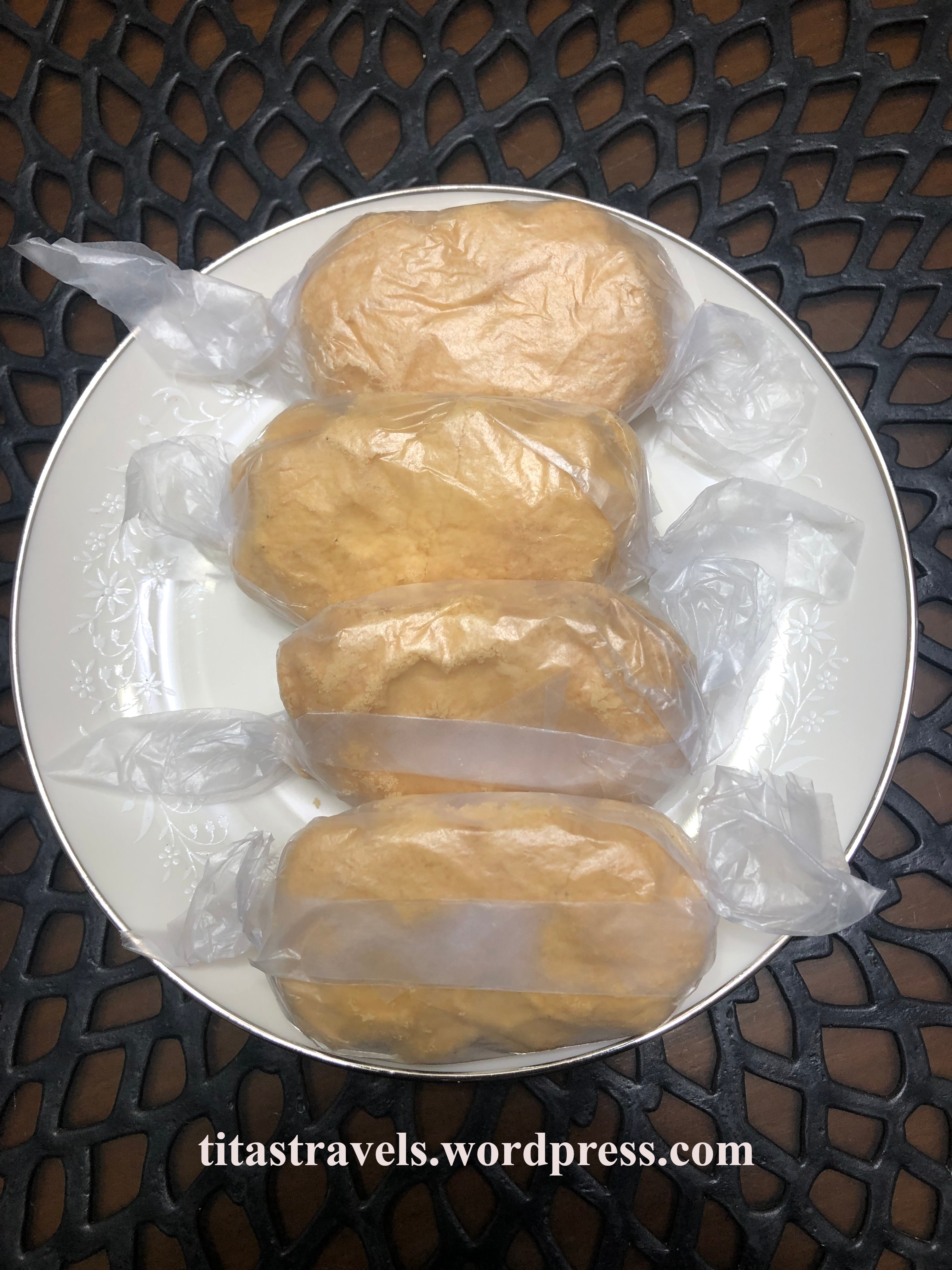
The light brown color, for me, is not that appealing but I do not like artificially colored food so appearance is not that important for me in this case.
The mildly toasted flour smell is easily discernible, along with a certain milky creaminess, a bit similar to pulburon, the Filipino version of the Spanish shortbread called polvoron (also made of toasted flour, sugar, and powdered milk).
Now for the taste – I love the milky and mildly sweet taste of galletas de Liliw, which goes well with coffee or tea. The toasted flavor of the arrowroot1 flour adds to its unique appeal. Definitely, another local delicacy to delight you!
This is not a sponsored post. I have not tasted uraro made in other provinces. I should do so when it would be safe to go to the provinces4 of Quezon and Marinduque – welcome additions to Tita S’s food trips!
I just want my readers to know more about my favorite uraro. I pay for all the uraro I buy. And you know what? Having friends from Liliw dropping by and bringing uraro as pasalubong9 makes it doubly-delicious and Tita S’s tummy so happy!
Sources of cover pictures: Orencia’s– https://www.facebook.com/orenciauraro/photos and Five Sisters – https://www.facebook.com/Five-Sisters-Uraro-Biscuit-525930727531046/photos/a.525931114197674/525931124197673
Did you find this post informative? I would like to hear your comment about uraro and if you have tasted it from any province in the Philippines. Do share this post with your Facebook friends, follow me by clicking on the bottom right corner of your device, and do not forget to like this post. Thank you.
– – – – – – – – – – – – – – – – – – – – – – – – – –
The following terms are defined for interested readers, especially those with “Senior-Moments”, not familiar with terms used in this post, and those too busy or lazy to Google such terms:
1Arrowroot is a starch obtained from the rhizomes (rootstock) of several tropical plants, traditionally Maranta arundinacea3. The name comes from aru-aru (meal of meals) in the language of the Caribbean Arawak people, for whom the plant was a staple. The information was obtained from the Wikipedia page “Arrowroot”.10
2Tagalog refers to the second largest ethnolinguistic group in the Philippines, after the Visayan people, numbering around 30 million, with most of them inhabiting Metro Manila, the Calabarzon11 region12 in southern Luzon6, the islands of Marinduque and Mindoro in Mimoropa13, as well as a plurality in the provinces4 of Aurora, Bataan, Bulacan, Nueva Ecija and Zambales in Central Luzon14. The information was obtained from Wikipedia page “Tagalog (people).”15
3Maranta arundinacea, maranta, West Indian arrowroot, Bermuda arrowroot, arrowroot, obedience plant, araru, araruta, ararao, or hulankeeriya, is a large, perennial herb found in rainforest habitats. Evidence of its cultivation in northern South America dates back to 8200 BCE. Currently, arrowroot1 starch is used in food preparations and confectionery, and for industrial applications such as cosmetics and glue. The information was obtained from the Wikipedia page “Maranta arundinacea”.16
4A province is the primary administrative and political division in the Philippines. It is the second-level administrative sub-division of a region12. There are 81 provinces (lalawigan) in the Philippines. Each province is governed by an elected legislature called the Sangguniang Panlalawigan and by an elected governor. The information was obtained from the Wikipedia page “Provinces of the Philippines.”17
See a related post: Foreign Seniors Ask: WHAT ARE PROVINCES IN THE PHILIPPINES?
5 Laguna is a province4 in the Calabarzon11 Region12 of the Philippines, located southeast of Metro Manila, north of Batangas, west of Quezon, south of the province of Rizal, and east of Cavite. This is the 7th richest province in the country, and the third largest province in the region. It hugs the southern shores of Laguna de Bay, the largest lake in the country. It is composed of 24 municipalities18 and 6 cities. The provincial capital is the town of Santa Cruz since 1858, after Bay (1581-1688) and Pagsanjan (1688-1858). It is historically one of the first provinces in the Philippines to have been visited by Christian missionaries. Its main natural resources are its agriculture and fisheries, owing to its position near Laguna de Bay and the surrounding lowlands. The information was obtained from the Wikipedia page “Laguna (province)”19
6Luzon is one of the 3 major geographical divisions of the Philippines. Located in the northern part of the country, it is the largest (ranked 15th largest in the world) and most populated island, as well as its economic and political center. Luzon is composed of 8 regions12: Bicol, Cagayan Valley, Calabarzon11, Central Luzon14, Cordillera, Ilocos, Mimaropa13 and the National Capital Region.
The 2 other geographical divisions of the Philippines are Visayas (central islands) and Mindanao (southernmost islands).
The information was obtained from the Wikipedia page “Luzon”.20
7Puto Seco or puto seko, is a white, dry, powdery Filipino cookie made from ground glutinous rice (galapong) soaked in water overnight, cornstarch, sugar, salt, butter and eggs. Milk may be added. It is baked until dry and brittle, then shaped into thin disks. Modern versions use flavors like purple yam (ube), coconut and buko pandan21. The name is derived from Filipino puto (steamed rice cake) and Spanish seco (‘dry”), in reference to its texture. Puto masa (literally, corn dough puto) is the multi-colored candy-like variant in the provinces of Batangas and Laguna5. The information was obtained from the Wikipedia page “Puto seco”.22
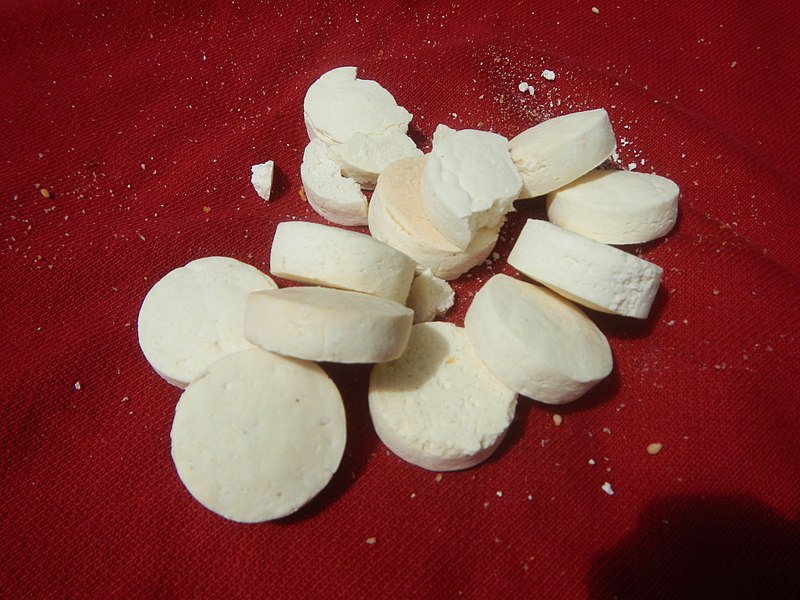
Photo source: Judgefloro, own work, CCO, created 01 August 2017, https://en.wikipedia.org/wiki/Puto_seco#/media/File:09806jfFilipino_cuisine_foods_desserts_breads_Landmarks_Bulacanfvf_21.jpg
8Pasalubong is the Filipino term for the tradition of giving gifts or souvenirs, from a destination visited by a Filipino, to family and friends upon one’s return home.
9“Uraro,” accessed March 29, 2018, https://en.wikipedia.org/wiki/Uraro
10“Arrowroot,” accessed March 29, 2018, https://en.wikipedia.org/wiki/Arrowroot
11Calabarzon, or Region IV-A, or Southern Tagalog Mainland, is a Philippine region12 located in the island group of Luzon6, with Calamba as its regional center. Calabarzon is an acronym for this region’s five provinces4: CAvite, LAguna5, BAtangas, Rizal, QueZON. It is the most populated region in the country and the country’s second most densely populated region, after Metro Manila. This region is located south of the National Capital Region (NCR), bordered by the provinces of Aurora, Bulacan and Metro Manila in the north, Manila Bay in the west, Tayabas Bay, and Sibuyan Sea in the south, and Lamon Bay, and the Bicol Region in the east. The information was obtained from the Wikipedia page “Calabarzon”23 and https://lga.gov.ph/region/region-iv-a.
12A region is the first-order administrative division in the Philippines. There are 17 regions in the Philippines, based on geographical, cultural and ethnological characteristics. It is further subdivided in provinces4, composed of cities and municipalities18 (or towns), which in turn, are divided into barangays24.
See a related post: Foreign Seniors Ask: WHAT ARE THE REGIONS OF THE PHILIPPINES?
13MIMAROPA, or the Southwestern Tagalog Region (as of 2016), is a Philippine region located in the island group of Luzon6, with Calapan as its regional center. MIMAROPA is an acronym for this region’s provinces: MIndoro (Occidental and Oriental), MArinduque, ROmblon, PAlawan. It has 6 local government units25 (LGUs): Marinduque, Occidental Mindoro, Oriental Mindoro, Palawan, Puerto Princesa (a city in Palawan), and Romblon. This region was formerly called Region IV-B (2002-2016). The information was obtained from the Wikipedia page “Mimaropa”.26
14Central Luzon Region, or Region III, is a Philippine region12 located in the island group of Luzon6, with San Fernando (Pampanga) as its regional center. It has 9 local government units25 (LGUs): Angeles, Aurora, Bataan, Bulacan, Nueva Ecija, Olongapo, Pampanga, Tarlac, and Zambales. The information was obtained from the Wikipedia page “Central Luzon”.27
15“Tagalog (people),” accessed January 29, 2018, https://en.wikipedia.org/wiki/Tagalog_(people)
16“Maranta arundinacea,” accessed March 29, 2018, https://en.wikipedia.org/wiki/Maranta_arundinacea
17“Provinces of the Philippines,” accessed April 2, 2018, https://en.wikipedia.org/wiki/Provinces of the Philippines
18A municipality is a small local government unit (LGU)25, in the Philippines which has corporate status and powers of self-government or jurisdiction as granted by law. It is a unit under a province4, subdivided into barangays24, and is called town, or bayan. In the Philippines, a municipality is headed by a mayor, a vice mayor and members of the Sangguniang Bayan (legislative branch). It can enact local policies and laws, enforce them, and govern its jurisdictions. It can enter into contracts and other transactions through its elected and appointed officials, and can tax as well. It enforces all local and national laws. The information was obtained from the Wikipedia page “Municipalities of the Philippines.”28
19“Laguna (province),” accessed March 29, 2020, https://en.wikipedia.org/wiki/Laguna_(province)
20Buko pandan is a popular variant of buko salad, made of strips of buko (young coconut) and green gulaman (agar) cubes flavored with pandan leaf29 extract. The information was obtained from the Wikipedia page “Buko salad.”30
21“Puto seco,” accessed March 29, 2018, https://en.wikipedia.org/wiki/Puto_seco
22“Calabarzon,” accessed February 20, 2018, https://en.wikipedia.org/wiki/Calabarzon
23A barangay is the smallest administrative division in the Philippines, headed by a barangay captain, aided by a Sangguniang Barangay (Barangay Council). It is the native Filipino term for a district or village. It was formerly called a barrio. In a metropolitan area, a barangay is an inner city neighborhood, a suburb, or a suburban neighborhood. The word barangay originated from the term balangay, a kind of boat used by a group of Austronesian people who migrated to the Philippines. A number of barangays grouped together is called a district. The information was obtained from the Wikipedia page “Barangay.”31
24A local government unit (LGU) in the Philippines is divided into 3 levels: provinces4, cities and municipalities18, and barangays24, according to Wikipedia page “Local government in the Philippines”.32
25“Mimaropa,” accessed March 29, 2018, https://en.wikipedia.org/wiki/Mimaropa
26“Central Luzon,” accessed March 29, 2018, https://en.wikipedia.org/wiki/Central_Luzon
27“Municipalities of the Philippines,” accessed April 2, 2018, https://en.wikipedia.org/wiki/Municipalities_of_the_Philippines
28Pandanus amaryllifolius is a tropical plant in the Pandanus (screwpine) genus, which is commonly known as pandan. Its fragrant leaves are tied into a knot and boiled to extract the green juice used as coloring and flavoring to native South and Southeast Asian cuisine. It also gives a pleasant aroma to boiled rice and other dishes. The information was obtained from the Wikipedia page “Pandanus amaryllifolius”.33
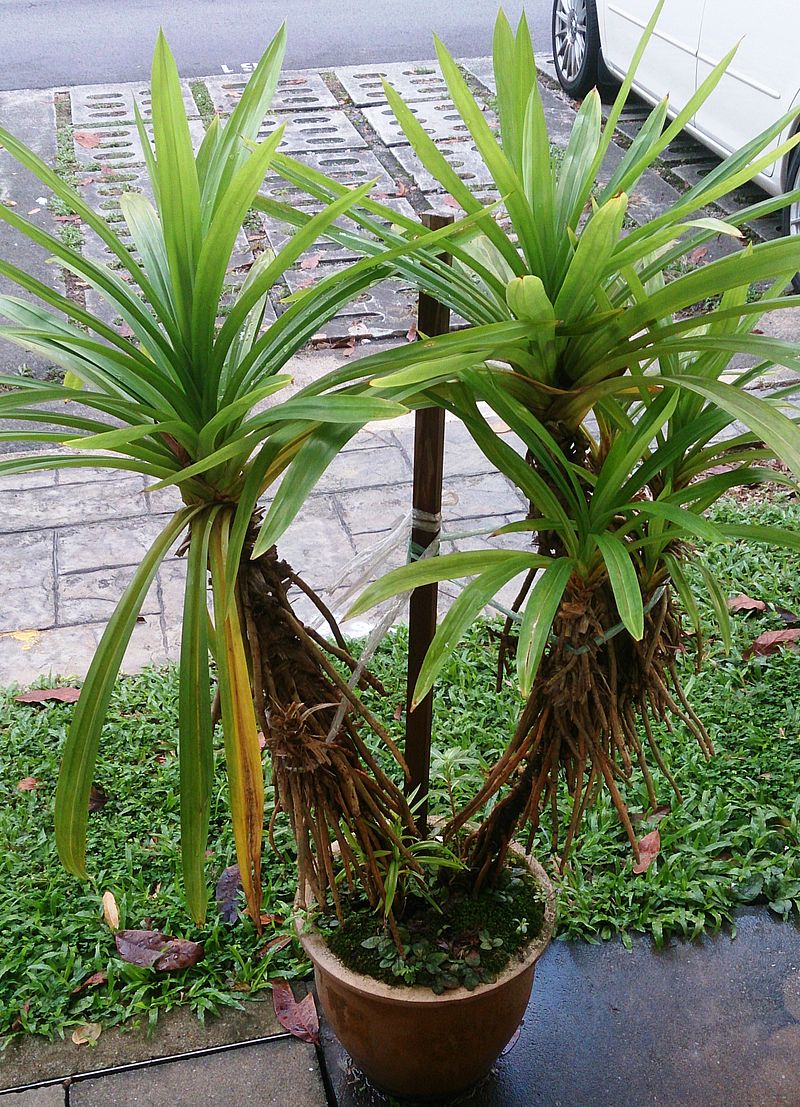
Photo source: Mokkie, own work, CC BY-SA 3.0, created 26 April 2014, https://en.wikipedia.org/wiki/Pandanus_amaryllifolius#/media/File:Pandan_Leaf_(Pandanus_amaryllifolius)_1.jpg
29“Buko Salad,” accessed March 29, 2018, https://en.wikipedia.org/wiki/Buko salad
30“Barangay,” accessed March 29, 2018, https://en.wikipedia.org/wiki/Barangay
31“Local government in the Philippines,” accessed April 2, 2018, https://en.wikipedia.org/wiki/Local_government_in_the_Philippines
32“Pandanus amaryllifolius,” accessed March 29, 2018, https://en.wikipedia.org/wiki/Pandanus_amaryllifolius

